 Bengal kittens near me is a very popular search term on the internet for people interested in Bengal Kittens but most people don't know that many reputable breeders will ship your new Bengal kitten right to your nearest airport. Is shipping a young kitten by air safe you might ask? Yes and it takes only a few hours from drop off at the breeders airport to the airport nearest your home. Carriers like Delta have special Pet services that insure live pets get to where they are going quickly, safely and at a reasonable cost. The most important part of the process is finding the right Bengal breeder. Bengal kittens are expensive and to insure that you get a Real Bengal with the important personality traits that make Bengals different from every other cat you need to search carefully to find the right breeder. We have put together an easy to follow checklist for choosing the right breeder. Be sure to review it and use it to screen your potential Bengal Breeder. Important things to consider.
Lots to consider and still more questions that would take all day to list here. Visit our FAQ pages for more information. We are Registered Bengals / Bengaltime cattery and we are both TICA and CFA registered. We are located Between Seattle, Washington and Portland, Oregon and we ship from Portland international airport. We do offer delivery in parts of Oregon and Washington. We welcome visitors in our home to see our kittens which are raised underfoot with us 24 hours a day. If you can't visit you are welcome to visit by Skype or facetime to see how the kittens live at any reasonable time of the day... Bengals are a rare treasure and VERY different from normal cats. They may not be for everyone but for most they are. It will be hard to have a regular cat after you have had a Bengal in your life and when you do you will understand that "If it's not a Bengal, It's just a cat". Visit us online at: registeredbengals.com On Facebook at: https://www.facebook.com/RegisteredBengals On Youtube at: https://www.youtube.com/channel/UCNP8nmW9urck7XIw3e6XLzQ?
1 Comment
 We are Registered Bengals / Bengaltime Cattery. We raise Purebred TICA Registered Bengal Kittens. We are able to ship our kittens Nationwide Except for Hawaii which does not allow Bengals. We are cage free breeders and never cage our Breeder Studs, Queens or kittens. The only time that our Bengals see the inside of a cage is when they are transported to and from the Vet for checkups and shots and when we ship or deliver them to you. All of our Bengals are in our home with us and underfoot on a daily basis. Because of this and the fact that we never use cages our kittens will come to you well socialized and ready to join your family. We are proud to say that our breeders and kittens have excellent personalities and temperaments are socialized from birth and Friendly. Some breeders say their kittens are shy when you visit or see them in videos but be aware that this is code for afraid of everyone because they have likely never had any human contact because they are in cages or locked away most of the time. We invite our buyers to visit us and their new kittens before you choose one and if you can't visit to call, skype or facetime anytime to see the Kittens, the conditions and personalities of our Bengals. In addition to our No cage policy we have Two Fast cat exercise wheels in our home, so you can expect that your kitten will come to you fit and with that great Bengal energy. Not everyone can but we encourage anyone considering buying a Bengal to buy them in Pairs unless you will be home with them and are able to give them the stimulation that they need. Bengals are NOT like normal cats and if they don't have stimulation they will find ways to stimulate themselves that you may not always like. Our stud Sharm Sascha of Bangalore comes to us from Russia and offers genetic diversity. Sascha is one of a kind. It is VERY rare for breeding stud Bengals to be kept in homes and almost every one of them Sprays but not Sascha and this sets him apart. Because of this we are able to keep him in our home with our Queens and kittens. Sascha sleeps with us in our bed each and every night, Sascha is one of a kind and his kittens will carry his traits. You can find us on the following platforms: Web Page - RegisteredBengals.com Facebook - Registered Bengals YouTube - Registered Bengals We post status updates practically every day and have many videos of our Breeders and kittens to see. We offer a complete guarantee that our kittens will come to you Happy, Healthy, well socialized and with good care and love on your part will be part of your family for many, many years. In addition when you buy a Bengal kitten from us we put everything in writing in our sales contract so you can trust that we will keep our commitment to you and your new kitten. Registered Bengals Sales Contract. We have put together a Buyer Checklist that we hope will make your Bengal Shopping a better and safer experience. Click here to view and print. There are many Bengal breeders listed online and not all are reputable. Some are selling Bengal Crosses that can not be registered and will almost certainly not have the traits that make Bengals better than every other cat breed. Shop around and choose wisely... If it can't be registered it is not a purebred Bengal. Registered Bengals / Bengaltime cattery is located between Portland Oregon and Seattle Washington in Beautiful Kalama, Washington. We do ship and can deliver in Parts of Oregon and Washington. To get answers to most if not all of your Bengal questions visit our FAQ page. Contact us for details and to reserve your little Lap Leopard today. Remember if it's not a Bengal, It's just a cat. Looking for a Bengal in Southern California or BC, Canada? We work with Breeders in both of these areas that we trust and can recommend. Contact us for details.
We are Registered Bengals / Bengaltime Cattery and we spent weeks researching whether or not to put flea collars on our Pregnant Bengal Queens. We are NOT veterinarians and have no specific training in this BUT we do breed Purebred Bengals and have an interest in Healthy Bengal kittens.
Prior to using these collars we tried several natural flea treatments and collars that did almost nothing and in one case actually seemed to attract fleas to our cats. The dangers of a flea infestation on small kittens are well known so it was with that in mind that we decided not to remove our Seresto 8 month flea collars from our Bengal Queens during their pregnancy. Just in case we did remove the collars for the first week of the kittens lives but then replaced them. We DID NOT put new collars on our Girls and the ones they had on were about Three months old. We had have had no issues and the kittens are all healthy and happy with No fleas. We can not recommend that anyone else follow our example but share this so that others that are looking for the same information that we were looking for might be able to decide for themselves how to proceed. Prior to using the Seresto collars we had used the one time per month Bayer Advantage Flea Treatments which work very well but since this puts the active ingredients into the cats systems we were not comfortable with this while our Girls were pregnant and or lactating. To follow the progress of our Kittens or queens you can visit our youtube channel or our Web Page. Our Two Bengal Queens, Lisa and Julie had 11 Healthy, Happy kittens that are developing nicely. It is our plan to keep these collars on all of our adult Bengals and Kittens over 10 Weeks old at all times moving forward.  We see people often on Facebook and other forums talking about how they were ripped off when buying a Bengal kitten so we spent some time recently looking at Bengal Ads on Craigslist, Hoobly, Go Kitty and other sites. It's amazing how many scammers are looking for unsuspecting Bengal Buyers. This is NOT meant to be a negative comment about these sites as we are listed there too. Except for craigslist which does not allow breeder ads. Remember if it looks to good to be true, it almost certainly is. There is NO WAY you are going to get a Purebred Registered Bengal for only a few hundred dollars. Unless there are some serious issues or you are a VERY lucky person. A Bengal mixed with another breed is NOT a Bengal and almost certainly will not have the characteristics that make Bengals worth the extra cost. Be very careful when doing your Bengal buying homework. If you are looking for a REAL, Purebred, TICA Registered Bengal Kitten choose carefully. If you have had a Bengal before or know anyone who does, You will know that a Bengal is NOT like every other cat. They are a VERY different breed of cat. Ask for updated pictures and even better NEW / Fresh videos of the kittens and specifically the one you are looking at. Ask to Skype or Facetime with the sellers to see how the kittens live. This will give you an idea of the environment they are living in. Some kittens are raised 100% in cages and taken out only for the occasional picture showing them standing in grass or on a tree limb. ask to see where they live and spend their days and nights. Being caged all the time is not overly conducive to a well socialized new family member... WE NEVER cage our kittens and our Stud, Sharm Sascha of Bangalore is in our home with us. He doesn't spray or mark because he is in a loving home with TONS of attention. Ask if the Breeder is CFA or TICA registered and what their Registered Cattery name is... Ours is (Bengaltime) on both CFA and TICA. You can see these on the official CFA and TICA sites. Look at their facebook, Website and Youtube pages for FRESH pictures and videos. Below are our sites: Youtube: https://www.youtube.com/channel/UCNP8nmW9urck7XIw3e6XLzQ Website - Registered Bengals: https://registeredbengals.com/index.html Anyone can grab a few pictures of Bengals online and say they are theirs... Remember "If it's not a Bengal, it's just a cat" We are Committed to Breeding Healthy, Happy, Well Socialized Companions And now you can experience the joy of owning one of these, Active, Affectionate, Beautiful Exotic Creatures. Looking forward to hearing from you! Registered Bengals / Bengaltime Cattery We are Registered Bengals / Bengaltime Cattery. We are located just 21 miles North of Portland, Oregon and just 2 hours South of Seattle, Washington in Kalama, Washington.
On July 10th,2019 Julie one of our Bengal Queens had 4 Beautiful Male Kittens and on July 15th, 2019 Lisa gave us 7 Beautiful kittens. All of these beautiful little Lap Leopards will be Tica Registered Purebred Bengals and will be available to go to their forever homes in Mid September, 2019. For Details and information you can visit our Website. We specialize in Brown Rosetted, TICA Registered, Purebred Bengal kittens. All of our Bengal kittens are hand raised with no cages and are able to freely roam our house like members of our family. Every One of our Purebred TICA Registered Bengal kittens gets lots of individual play time and are exposed to our family and other Bengals as well as our friends and family members, so they are used to interacting with people and other cats. If you want the most beautiful Bengal cat, like the ones you see in magazines; you will find them here. "If it's not a Bengal, It's just a cat" 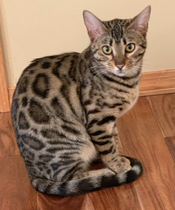 Are you aware of and up to the responsibilities of being a Bengal owner? There are many aspects that potential cat owners need to consider before acquiring a Bengal cat or kitten. Bengals have their own unique personalities and health care needs. Bengals are becoming more and more popular among cat fanciers and for good reason. Bengals offer the best characteristics of cats with a few dog traits thrown in. The Bengal is one of the most exotic breeds of cat that you will ever come across. The uniqueness of their breed lies within their blended bloodlines giving you an animal like no other. The Bengal cat is a cross between a domestic cat and an Asian leopard cat. The blend of these two bloodlines created a mix that is hard to match in any other breed of cat. Bengals were recognised by The International Cat Association (TICA) in 1983 and finally received full championship status in 2005. Bengals are a beautiful and muscular breed. They make excellent pets and are thought by many to be Hypoallergenic. Meaning that if you are allergic to cats you are less likely to be allergic to this particular species. Because of the leopard like appearance many people associate them with Wild cats but they are generally very social and adapt well to home life, provided they are kept stimulated. Every Bengal is an individual but in general Bengals make excellent house pets and get along well with other pets in the home. They are best suited to homes with older children that will enjoy playing with them. See also Bengal Cat Standards and Behavior. Bengal Cat’s personality: Bengal cats are very loving, loyal and a dedicated part of the family unit as they possess a good temperament with children. They are commonly very playful and enjoy interaction with people on a regular basis to show off their mischievous nature. With an instinctive love of water they are often found drinking from taps or other water sources in the home, so keeping toilet lids down is advised. They love to interact and play with other cats and dogs and are generally very talkative! How much exercise do Bengal Cat need: Bengals are a very active, inquisitive and intelligent breed. They love jumping on people, worktops, and love heights! They like to get involved with the daily lives of the family and love sticking their nose or paw into anything going on in the house. Unrolling toilet rolls and learning to turn on faucets are common Bengal activities. They also don’t like being left of their own for long – so if you work all day and do not have other pets or children for them to play with, it’s best to get two so they can keep each other entertained. Potential Bengal Cat health problems: Bengal cats are generally strong and hardy, however, they do have some known health problems, Reputable breeders screen for these issues so provided that you work with a good breeder they should not be an issue for you. See Bengal Cat Health Bengal Cat Traits: Size: The average size of Adult Bengals is about the same as most other cat breeds with adult males weighing slightly more than adult females. In general an adult Bengal will weigh between 10 and 14 pounds. Life Span: When fed properly and kept up to date with vet checks and activity levels, you can expect your Bengal cat to live a long and happy life of 15 to 18 years or more. Shedding / Hypoallergenic: Because they have a more dense Pelt versus a normal cats fur the bengal cat sheds very little in comparison to other cat breeds. In addition Bengals are one of just a few cat breeds that are Hypoallergenic. Meaning they are less likely to cause an allergic reaction in people who are allergic to cats. Coat Colors and Patterns: Bengals come in a variety of coat colors and patterns and you can find an excellent resource at this link on most of them. In general the most popular color is the brown Rosetted. Bengals come in shades of brown, silver, charcoal and a few colors in between with a few different patterns. Everyone has their own favorite look but in general the wild tiger look is what draws people to this breed. Does the Bengal breed fit your lifestyle?
When properly socialized Bengals will get along with other house pets and can be part of a multi pet household. The key is in the introductions to others as a kitten, this is one of the BIG reasons that it is important to find Bengal kitten breeders that spend the time with their kittens to socialize them. Bengals and Children: Just as in humans, every Bengal is different but in general Bengals are good with other members of the family and children. This again goes back to how the breeder socialized the kittens. If the breeder says the kittens are shy, it is a sure sign that they have not spent enough time interacting with them. If possible visit the breeder and spend time with the kitten before you buy one. Pick the one that seems to be the least shy and wants your company or wants to play. Ease of training: Unlike other cat breeds, Bengals are able and willing in most cases to be trained and are willing to accept commands from their owners. Bengals can be trained to walk on a leash which is VERY rare in the cat world. Prepare for a few strange looks... Because of the popularity of Bengal cats you should NEVER allow your Bengal to go outside without you. It is likely to end up as someone else's pet. Most Registered Bengal Breeders will have a microchip implanted in the kitten. It is about the size of a grain of rice and can easily be scanned by vets during visits or by animal control if they were to find your cat so that it can be returned to the proper owner Biting: Bengals do not bite any more or less than any other cat breed and in general will only bite if they are in danger. Playful nips during play are common and rarely do any harm. Vocalization: Bengals tend to speak more than many other cat breeds and will let you know if they need or want something. Intelligence: Bengal cats are one of the most intelligent of the cat breeds, Knowing this it is easy to understand why they are more vocal than most other breeds. If they are vocalizing they are in many cases trying to communicate with you or let you know they are displeased about something Affection: Bengal cats love to cuddle and will show their owners affection. They will bond with their owners and show lots of love. BUT if you try to force a bengal to cuddle you are likely to get a hiss or even possibly a scratch. You can't force love... Every Bengal will be different in the amount of handling and cuddling that they want and need. Kids: Great! Bengals love kids and enjoy their high levels of energy. All of our Bengals have been socialized with some very energetic, grabby and loud children so they will be familiar with most behaviours that children do. Just remember that children need to be coached on how to approach a kitten and how to be gentle. Dogs: Great! With all other pets make sure that they are gradually introduced and have an opportunity to get familiar with each other’s scents before they physically meet. Bengals can actually bond with dogs and become great friends. Water play: Some Bengals especially love to get in the shower or play in the tub. A fountain with running water such as commercially available cat drinking fountains can provide a lot of fun for your Bengal . Sometimes they may take a toy and drop it in the water as if to see if it is playing dead. Or they may take a paw and dig beside the fountain as though they are digging up water… It's all lots of fun to watch! You wouldn’t believe that a cat could like water so much. Most Bengals love to splash and play with water. Running water from a sink or a fountain is a blast to play with. Watch your toilet (especially if you use cleaning agents like bleach) and running hot water. It’s rare, but some Bengals have also been known to swim or to shower with their owners! Summary: When purchased from the right breeder and properly socialized as kittens, Bengals make excellent pets and companions. The key is finding the right breeder. Shop carefully and use the checklist provided at this link as a guide in making your decision. (Breeder Checklist). For more Bengal related content and information or to find your purrfect Bengal kitten or Bengal Related Products, visit us at RegisteredBengals.com Have you got a Bengal Cat? Have you got advice for anyone considering getting one? Let us know in the comments below… "If it's not a Bengal, It's just a cat" If you have one, You know it's true... We see many posts, questions and comments online asking about the cost and time associated with breeding purebred registered Bengals so we thought we would outline some of the costs required to successfully become Bengal breeders as well as to outline some of the issues we faced as we got started.
As we started researching Bengal breeding and looking for kittens to start our program we were surprised to get responses from Bengal breeders such as "We don't sell to breeders" A little bit of a surprise given that a breeder had to of agreed to sell them kittens to start their programs. We are still new to breeding Bengals so we are not sure why the negative attitudes from some established breeders but to be honest the negative and sometimes hostile responses were the exception and not the rule. We found most Bengal breeders to be helpful and open with their advice and guidance. A special note of thanks to Greg Joseph of Bangalore Bengals in Los Angeles for being very open and receptive to answering questions before and after we bought our Stud Male (Sharm Sascha of Bangalore) from him. People ask, why are Bengal kittens so expensive and the answer is not really that complicated. It costs a lot to properly test and raise Bengal kittens as well as properly housing your breeders in a clean, safe and open environment.. Below is a breakdown of some of the costs associated with Bengal Breeding. We do NOT cage our breeding Bengals or kittens. Costs There are many things that go into the price of Bengal kittens
Time Consuming Factors Breeders must consider:
It would not be an exaggeration to say that in our first months of setup and acquiring our first Stud and first two breeding queens we spent $20,000 Plus. to set up our home, acquire our breeders, transport them to our Cattery, provide all of the medical testing and shots they needed, Cat toys, cat trees, litter boxes, This does not take into consideration the time that all of this took either. The costs will continue to escalate as we grow with the set up of a dedicated room for kittens, a place to keep our young females when in heat that we do not yet want our stud to get to them. If you are planning to become a Bengal breeder plan on time, Money and lots of research to get off to a good start. Breeder Scams A reminder as you get started that there are MANY Bengal scams online and just a short search will show 50% off Bengals. Proceed with extreme caution with these as virtually every single one is a scam and you will either not get your kitten at all or will not get a purebred registered Bengal kitten that you can breed. Almost all cut price sellers are selling kittens that can not be registered as Bengals, are of very low quality, have genetic or other diseases that will dramatically shorten their lives... If it sounds to good to be true, it probably is... We are Registered Bengals / Bengaltime Cattery located in Kalama, Washington just North of Portland Oregon and only two hours South of Seattle, Washington. We do sell to breeders as well as Pet Buyers. See Breeding Rights Many questions about us and our program can be answered by visiting our FAQ / Frequently asked questions pages. We also have many Bengal informational links at the bottom of our products page. These links can save you lots of time in your Bengal Research. If you are interested in a Bengal kitten now or think you may be in the future, we encourage you to visit our site and get on our list for kitten updates. (https://registeredbengals.com/kittens1.html) Also take a look at the Bengal related links and products on our products page. (https://registeredbengals.com/products.html) "If it's not a Bengal, It's just a cat" 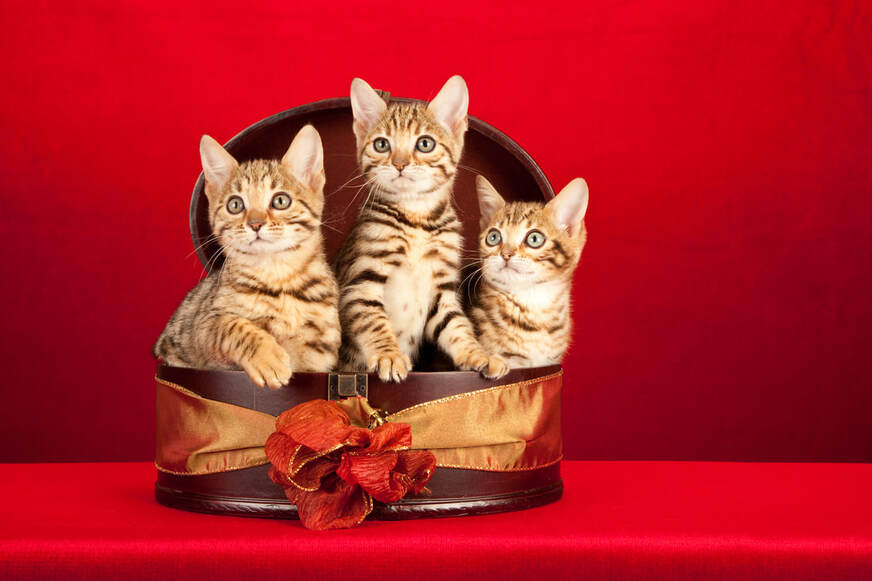 At Registered Bengals We feel strongly that choosing your Bengal breeder is a serious decision and that Bengal kitten buyers should be well informed. We are a Bengal Cattery (Bengaltime TICA & CFA) Located just North of Portland, Oregon in Kalama, Washington. We specialize in Brown Rosetted, TICA Registered, Purebred Bengal kittens. Our kittens are lovingly hand raised with no cages and freely roam our home like members of our family. Our cats are not “wild”, however, they are very active, love attention and love heights. Our kittens gets lots of individual play time and are constantly exposed to our family and other feline family members, so they are used to interacting with people and other cats. Choosing a Bengal breeder is a serious decision so it's important that Bengal kitten buyers be well informed. Knowledge Every Breeder should have a good knowledge of the history of the Breed, importance of genetic screenings, about Breed temperament and social characteristics. Understanding the history of the breed allows a you and the breeder to understand where the Bengal Breed is getting it's characteristics and also which genetic screenings to use to increase the overall health of the Breeder's lines and the Breed itself. (See Also Bengal Health) Breeding without genetic screenings is what keeps harmful genetics in the bloodlines. Where did the breeder get their Breeding Bengals from? Fresh Bengal lines should be pulled from locations not adjacent to the breeders location. Breeders that are only out for a profit won't care who they sell to. Responsible Breeders try to be sure that a Bengal kitten is a good fit for the buyer. (See also Is a Bengal Kitten right for you.) Motivation: It's important to determine what the motivation is behind why a Breeder is choosing to be a Bengal Breeder. Some questions you should ask yourself are: Is the breeder taking shortcuts to obtain more profit by using cheap or inferior food, is the Breeder knowledgeable about the history of the Breed and specific health concerns to avoid, what are the goals the Breeder has for their Breeding program? The reason why motivation is so important is that if profit is the bottom line, then short-cuts will likely lead to kittens whose health and temperament can be questionable. Environment and Socialization - See also Bengal Buyers Checklist It's important to understand how the Breeder is keeping the kittens you are buying and also how is the Breeder treating the Breeding Bengals themselves. You don't want to unwittingly encourage kitty mills, sacrificing the lifestyle of the Breeding Bengals just for an "economical" kitten. This information also goes back into what is the motivation behind Breeding. You should ask if there is a "Socialization Program" in place to insure that every kitten being produced is going to have that famous Bengal social temperament. Remember, a Breeder that has a smaller operation won't necessarily produce a better socialized kitten because of the perception of more intense care than another Breeder with a larger operation as long as there is a good Socialization Program in place! We highly encourage you to visit the environment of the Cattery in person if you can and question the Breeder on their Socialization Program. This is more important for Bengals specifically because they are bred to be very social and absolutely require stimulation and if this fact is being ignored by the Breeder, than you should be prepared to re-socialize your kitten! You should also consider your available time. Most reputable breeders will ask you how much time you have to spend with your new kitten and whether you have children or other pets in the home. WHY? Because Bengals require a lot of stimulation and if you're not able to provide that, most breeders will recommend that you buy two kittens at the same time to insure your new kitten has a play partner to keep him or her occupied when you are not home. This will prevent MANY behavioral issues in the future. See Also Why Two kittens are better than one Breeder Commitment Has the breeder committed to ethical breeder standards in TICA, CFA or other Bengal organizations? How active is the Breeder in the Bengal community? Can you find the Breeder online in the TICA organization, CFA the FaceBook community, youtube, ect? An active involvement in the Bengal community shows that there is a passion for the Bengal Breed and that they're interested in sharing and learning from other Breeders. Does the Breeder have a Reputable Breeder status in any organization? This would show they take the time to let everyone know how dedicated they are to the Breed as this distinction requires higher standards and hoops to jump through and is not achieved easily. Another good sign of Reputation is how quickly are they getting their kittens homes. If you have a Breeder that is trying to sell older kittens verses a Breeder that has a wait list of people clamoring for their kittens, then you have to ask yourself what is the difference everyone else is seeing? Sometimes going with a Breeder simply because you can get your kitten faster as opposed to waiting for a quality kitten from a Breeder with a well-known reputation can have unforeseen consequences later. There may be a reason your kitten was available so quickly that you are not aware of. Quality People buy Bengals for many different reasons. Some do so for the hypoallergenic nature they have, while others like the dog-like personality they are known for, but more do so for the exotic wild appearance that garners attention everywhere. This is called the "WOW factor." In the show ring, titles are won by how closely a Bengal will adhere to a strict standard that was determined by TICA or CFA. In the rest of the world, quality is determined by the glittered plush pelts that show stark contrast and bold colors that scream EXOTIC. Simply put, not all Bengals are created equal and if you have a Breeder that has taken the time and invested savings into purchasing Breeding Bengals that are high quality, then the kittens produced will likely carry the same high quality. Quality can also be seen in terms of health, which should be obvious if the Breeder practices genetic/vet screenings. Breeders who mention personalities of their Breeding Bengals on the respective Queens and Studs web pages are obviously showing they understand the importance of temperament. Cost Sometimes it seems simpler to choose a Breeder on what seems to be the more "economical" price. However, the phrase you get what you pay for will almost certainly hold true. This does not necessarily mean that Breeders that charge more are giving a better quality kitten for the price. The best means of deciding if you are in fact getting what you are paying for is to take the entire picture into consideration. Simply put determine what exactly are you being offered in exchange for your hard-earned money? There are many things that go into the price of Bengal kittens
Time Consuming Factors good Breeders must consider are:
If the Breeder you are considering is NOT spending the money they are making on all of these factors OR spending their time with everything that's needed to Responsibly Breed, Then the Breeder is taking shortcuts and you are spending too much! Kitten Prices should be based upon how much a Breeder is investing into their Breeding program and how much of their time they are using to breed responsibly. Recap You are spending a considerable amount of money but more importantly, you are putting your time and heart into a companion that will be with you for many years. With this kind of investment, it's important that you take the time to research and choose the best TICA Registered Purebred Bengal Breeder to ensure that you are getting what you are paying for in terms of quality, health, and temperament. You should ask serious questions to determine the Breeder's knowledge, socialization program, breeding goals and to determine if the cost is representative of what the breeder is offering. A reminder that there are MANY Bengal scams online and just a short search will show 50% off Bengals. Proceed with extreme caution with these as virtually every single one is a scam and you will either not get your kitten at all or will not get a purebred registered Bengal kitten. Almost all cut price sellers are selling kittens that can not be registered as Bengals, are of very low quality, have genetic or other diseases that will dramatically shorten their lives... If it sounds to good to be true, it probably is... We encourage you to visit our site and get on our list for kitten updates. (https://registeredbengals.com/kittens1.html) Also take a look at the Bengal related links and products on our products page. (https://registeredbengals.com/products.html) "If it's not a Bengal, It's just a cat"  Bengal Cat Standards: The Bengal should be alert, friendly and affectionate and in excellent physical condition with a dependable temperament. The Bengals wild appearance is enhanced by its distinctive spotted or marbled tabby coat which should be thick and luxurious. The Bengal is a large to medium cat, sleek and muscular with a thick tail which is carried low. The females may be smaller than the males. Head and Neck-Broad medium wedge with rounded contours, slightly longer than it is wide with high cheekbones. The head should be rather small in proportion to the body but not taken to extremes. The profile has a gentle curve from the forehead to the bridge of the nose. The line of the bridge of the nose extends to the nose leather making a very slight concave curve. The nose is large and broad with a slightly puffed nose leather. The muzzle should be full and broad with a rounded, strong chin and pronounced whisker pads created by the widely set canine teeth. The neck should be thick, muscular and in proportion to the body. Allowance should be made for jowls in adult males. Ears-Medium to small, rather short with a wide base and rounded tips. Set as much on the side as on the top of the head, following the contour of the face in the front view and pointing forward in profile. Light horizontal furnishings are acceptable but ear tufts are undesirable. Eyes-Almost round, oval preferred, large but not bold. Set on a slight slant toward the base of the ear. Body-Long, sleek and muscular. Large to medium and robust with the hindquarters slightly higher than the shoulders, showing depth of flank. Legs and Paws-Legs of medium length, strong and muscular. The hind legs should be a little longer than the front and be more robust. The paws should be large and rounded. Tail-Medium length, thick and even, with a rounded tip; may be tapered towards the end. Coat-Short to medium in length, very dense, luxurious and unusually soft to the touch. Allowance should be made for a slightly longer coat in kittens. Basic Cat Behavior: It is certain that the cat thinks of a human differently than it does other cats (i.e., it does not think of itself as human, nor that the human is a cat). This can be seen in the difference in body and vocal language it uses with the human, when compared to how it communicates with other cats in the household. Some have suggested that, psychologically, the human keeper of a cat is a sort of surrogate for the cats mother and those adult domestic cats live forever in a kind of suspended kitten hood. With proper training and reinforcement of social behaviour, poorly socialized cats can become more social over time. A cat that has been made a 'stray' or has been mistreated, can in time, with patience and understanding, become a social, family cat. Understanding your cat is an important part of your relationship with your pet. A cats body language can tell you a lot about its mood. Cats communicate a variety of messages using cat body language. Examples include arching their backs as a signal of fear or aggression, and slowly blinking to signal relaxation. Bengal Cat Body Language: Tail: As is the case with dogs, the tail is often used as a signalling mechanism. A flick or twitch can indicate minor irritation and a tail held high suggests confidence. In addition, a cats tail may 'wag' or move rapidly to express a state of conflict. A cat who chooses to lie with its stomach and chest exposed conveys happiness, trust and comfort (this is also typical of overweight cats, as it is more comfortable for them), however, a cat may also roll on its side/back to be able to defend itself with all four sets of claws. When the tail is erect for its full length, it is used as a greeting to another cat or to a friendly human and is an invitation for contact rubbing. The tail that is wrapped against the cats body may mean that the cat is contented or for a nervous cat, it is a defensive posture. Ears: If the tail alone does not give you enough information about what the cat is thinking, take a look at their ears. Cats involved in a standoff will make threatening sounds, however, to really understand what is happening, check the ear position. The defenders ears will lie down flat against the head for protection. The cat whose ears are lying flat, but with a twist, so that the tips of the back of the ear can be seen from the front, is the aggressor. Forward-pointing ears are used by confident, curious, cats to listen for sounds in front of them. A cat that is hunting prey (or playing) will also keep its ears forward to collect as much auditory information as possible in order to execute a successful pounce. Eyes: In a standoff situation, the defending cats pupils will be dilated to provide the cat with wider peripheral vision, an advantage in anticipating an attack. The aggressors pupils narrow to give him better depth perception, an advantage in judging where to attack. While dilated pupils can indicate fear, they are also indicative of the light conditions. In dim light the pupils expand to allow as much light to enter the eye as possible. Perhaps one of the most wonderful of feline body signals, but one that is most often missed, is the slow eye blink. Blinking is a very powerful communication used between cats when they are sitting or lying down. Slow blinking towards a cat shows that you are not a threat and they will most likely return the slow blink telling you that they feel comfortable with you and they like you. It is also a great way to say 'I love you' to your favourite feline companion. Greeting: Cats normally greet each other by rubbing faces. When a cat greets you by standing on its hind legs, it is simply trying to reach your face. If you were to lower yourself so your face is within reach, your cat will rub their face with yours. This is only done to humans that the cat trusts. Another friendly way for a cat to greet its owner is to roll on its back, stretching its legs as far as possible, yawning and exercising its claws. The "belly-up" position is a very vulnerable position, it indicates total trust of the person involved. It is a lazy way for the cat to greet its owner, a more active cat would probably rub itself against your legs. Cats have scent glands on the temples, around the mouth and at the base of the tail. When a cat rubs itself against you, it is rubbing off some of its scent to say "this is mine". Only other cats can smell this scent. Kneading: Kneading is when a cat extends and retracts its claws, usually when it is resting on its owner's lap. This behaviour comes from kitten hood, kittens knead their mother while suckling to make the milk flow more freely. Adult cats will do this when they feel safe and contented. They see their owners as surrogate mothers and, as pampered pets, will retain some kitten characteristics through their adult life. If the cat dribbles or sucking of the owners clothes happens whilst kneading, the cat in question will probably have been taken from its mother too early and never had a chance to grow out of the behaviour naturally. These behaviours are usually for life. Flehmening: Flehmening is when a cat screws up its face, the lips curl back baring its upper and lower teeth allowing more chemical aromas to register in the Jackobsen's Organ. The Jackobsen's Organ is situated in the roof of the mouth in two sacks. In wild cats this aids in knowing the "lie of the land", and aids in knowing what other animals may be in close proximity. In the domestic cat this is not so important as with the wild cat and the flehmening reaction is not so obvious. The Jackobsen's Organ is also connected to the part of the cats brain concerned with sexual behaviour and appetite. Gifts: Owners of outdoor cats will eventually be presented with gifts of dead creatures, such as mice and birds. For the cat, this is perfectly natural this behaviour should never be punished in any way. A Queen will bring prey home to her kittens to introduce them to hunting. For this reason, the behaviour is most often seen in female cats. Neutered cats that have no kittens of their own and male cats will also bring gifts home. Burying Feces: A subordinate cat will bury its feces so as not to demonstrate its presence to more dominant cats. A dominant cat will leave its feces uncovered. A cat kept on their own will bury its Feces by scratching on the litter tray, this has nothing to do with cleanliness - it is a sign that the cat feels that its owner is dominant. In households with more than one cat, you will often find that one or two cats leave their feces uncovered, whereas the rest will cover it up. Wagging Tail A wagging tail could mean the cat is angry or can mean that the cat is feeling indecisive - it wants to do two things at once and cannot make up its mind which action to take. Eating Grass Eating grass often occurs when the cat needs to clean out its stomach by vomiting (maybe to get rid of fur balls). If your cat does not have access to grass, house plants or anything similar will be used by your cat. Vomiting will occur soon after the cat has eaten grass. It has been said that cats eat grass to obtain "Folic Acid", something that cats need in minute quantities for its well-being. "Folic Acid" cannot be obtained from meat. We hope you have found this article interesting and informative.
For Bengal kitten updates and information visit and like us on Facebook too. For more Bengal related content and information or to find your purrfect Bengal kitten or Bengal Related Products, visit us at RegisteredBengals.com See also, Things you should know before getting a Bengal. "If it's not a Bengal, It's just a cat" If you have one, You know it's true... 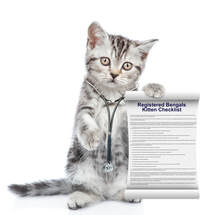 Purchasing a Bengal kitten is one of the best things you’ll ever do, but it’s also a big responsibility. Be sure to consider carefully before taking on the challenge that these amazing bundles of joy bring. Before you buy see the articles at the links below. Is a Bengal Kitten right for you Things you should know before getting a Bengal Bengal Cat information Now that you have carefully considered the items above and made the decision to buy a Bengal, We will walk you through the basics of how to take care of that playful, purring bundle of energy. Bengal kittens are so cute, it’s understandable that Bengal owners wish their kittens could stay kittens forever. This is the critical time when you, as the pet parent, lay the foundation for your cat’s future health and behavior. It’s also the stage where you have to decide what food to buy, what vet to visit, where to place the food dishes and litter box. The good news is that all of your hard work during these first few months will be rewarded by years of love and enjoyment. The first months are critical: Your kitten will arrive from the breeder at approximately 10 to 12 weeks of age. Kittens have very specific developmental needs for the first 10 weeks of their lives in terms of nourishment, warmth, socialization, and socialization. For this reason, most breeders typically wait until their kittens are at least 10 weeks old before they’re put up for Sale. If you, by chance, find yourself in a situation where you need to care for an orphaned kitten under 10 weeks old, consult your vet for special instructions. Find a Good Vet: This Link May Help If you don’t have a vet in mind already, ask friends or the breeder that you got the kitten from for recommendations. Local dog walkers and groomers are also a great resource for Vet recommendations. One of the first things you should do with your new kitten, if not the very first, is take him in for an exam. This trip is almost as important for the owner as it is the kitten, because it not only tests for health issues like birth defects, parasites, and feline leukemia, but it allows you to ask those all important questions including advice on litter box training your kitten. Please note that reputable breeders test all breeding studs and Queens for Genetic defects. See Bengal Buyers Checklist Get the Most Out of Your First Vet Visit: See also Bengal Cat Vet Visits
Shop for Quality Food: Feeding a kitten isn’t as easy as grabbing a bag of cat chow at the nearest convenience store. Growing kittens need as much as three times more calories and nutrients than adult cats. That’s why it’s important to find a good quality food designed especially for kittens. There are many in the Bengal community that believe Bengals in particular should be fed a Raw Diet. You will need to weigh you options, consult your Vet and make a decision. A name brand food, formulated for kittens, is the simplest way to ensure that your kitty gets the proper nourishment without supplements. Here at Bengaltime Cattery we feed a mixture of Raw, Canned and Royal Canine Dry Kibble, served separately in the morning and evening. We leave food out all day for our Breeding Queens and Young Kittens. Set Up a Feeding Schedule: To keep up with your kitten’s appetite, you’ll want to establish a daily feeding routine. The best way to ensure that you’re not under or over-feeding your kitten is to consult with you veterinarian about how much and how often to feed. At 3 to 6 months of age, most vets recommend feeding your kitten three times a day. Once he’s reached six months, you can scale it back to twice a day. Keep stocking your pantry with kitten food until your baby reaches adulthood, 9 to 12 months old. In addition, don’t forget to keep his water bowl fresh and filled at all times. But hold the milk. Contrary to popular belief, milk is not nutritionally sufficient for kittens and can give them diarrhea. Your kitten should arrive from the breeder already litter box trained. Prepare a Room: See Also Bringing your new kitten home Before you bring your kitten home, it’s best to designate a quiet area where the kitten can feel comfortable and safe. In this base camp, you’ll need to put a few essentials like food and water dishes, a litter box (preferably one with low sides), and some comfortable bedding. Tip: Remember, cats don’t like their food and litter box too close together. So place the food dishes as far away from the litter as possible within the space. Spend time with your kitten: See Before your Kitten Arrives and When you get home. Once your vet has cleared your kitten as free of disease and parasites, it should be placed in a small room with it's litter box and food to settle down and get comfortable with it's new surroundings. A Bedroom is ideal. BUT remember that the room you start with will be your kittens go to room for safety for a long time to come. We suggest that you allow your new kitten to acclimate in the safety of this smaller area for two weeks before allowing the full run of the house. This allows the kitten to bond to you and get comfortable in it's new surroundings. Now after your kitten is comfortable with you and it's new surroundings, it’s safe to let your kitten explore the rest of the house and other pet roommates. Handling and playing with your kitten at least two or three times a day will help him or her form a strong emotional bond with you. If you have children, monitor their introduction to the new kitten to make sure it’s a positive experience for both the kitten and child. Get Ready: We have put together a list of our recommended Bengal products at this link. Here’s a list of some of the important items you’ll want to have before bringing your kitten home:
Watch for Early Signs of Illness: See Also Bengal Health Relocating and being taken from it's mother and litter mates is stressful and young kittens are more susceptible to a number of illnesses, it’s always best to catch a health issue in its early stages. Contact your vet immediately if your kitten displays any of the following symptoms.
For Bengal kitten updates and information visit and like us on Facebook too. For more Bengal related content and information or to find your purrfect Bengal kitten or Bengal Related Products, visit us at RegisteredBengals.com
See also, Things you should know before getting a Bengal. "If it's not a Bengal, It's just a cat" If you have one, You know it's true... |
Registered Bengals
We raise quality TICA & CFA Registered Purebred Bengal Kittens in our home in Beautiful, Kalama, Wa. Archives
April 2020
Categories
All
Blog Titles:
|
If you are visiting our site Registeredbengals.com from a Mobile device you may have a better experience visiting our
other Page Bengaltimecattery.com. The content is exactly the same but the pages will display
in "Desktop mode" which should make for a better browsing experience.
other Page Bengaltimecattery.com. The content is exactly the same but the pages will display
in "Desktop mode" which should make for a better browsing experience.
Your positive reviews and comments on the sites above would be appreciated.
If we did not meet your expectations please contact us
and give us an opportunity to make it right.
If we did not meet your expectations please contact us
and give us an opportunity to make it right.
|
Lyubov & Andy 503-484-3033 [email protected] Registered Bengals / Bengaltime Cattery Verified / Reputable Bengal Breeders Kalama, Washington |
Site Updated 5/5/25
|
2019 / 2020
CFA Bengal Breed Council Member. |
|
©2016 - ©2025 by Registered Bengals - Washington State Bengal Breeder
Schedule an appointment to come visit your kitten you can see your kitten by facetime almost anytime. Shipping and or personal delivery available (To Bookmark this page use "Control D" Windows or "Command D" Mac) |
Bengal kittens for sale, Bengal kittens available, Hypoallergenic cats, Bengal colors and patterns, Bengal Stud Service, Registered Bengals, Bengal Time, Bengal kittens in Oregon, Bengal kittens in Portland, Bengal kittens in Washington, Bengal kittens in Seattle, Bengal kittens in Spokane, Seattle Bengals, Bengal cats in California, Bengal cats near me, West coast Bengal cats, Bengal BLOG, Bengal kitten prices, How much is a bengal kitten, Bengal cat health issues, Best Bengal kitten breeders, Bengal Health Guarantee, Bengal cattery, Cattery, Bengal, Bengal Yelp Reviews, #available #bengal #bengal cat #bengal kitten #bengals #bengals nation #bengals of instagram #bengal cat lovers #bengal world #bengal breed #kittens #kittens of instagram, leopards #living room leopard #cats #phenomenal kittens #fabulous pets #TICA #CFA #Bengaltime #Registered Bengals #Cattery #Kittens near me #Lap Leopards #lil Leopards #Bengals near me #Bengal Bengal Kittens in Idaho, Bengal kittens in Utah, Bengal Kittens in the Pacific Northwest, Bengal Adoption, Adult Bengal cats, Bengals for sale to breeders, Bengal Health issues, Best cats, Most expensive cats, make money breeding Bengals, Bengal products, Bengal Pictures, Kitten Pictures, Cat products, Cat Vitamins, Raw feeding, Cattery, Breeder, Tica. CFA, The International Cat Association, Cat Fanciers of America, Hypoallergenic, For Sale,Best Christmas Gift, New Years Gift, Birthday Gift, Gifts for Her, Bengal Cats,Verified Bengal Breeder,VBB, The international Bengal Cat Society, TIBCS, Emotional support kittens, ESA, Emotional support cats, Reputable Breeder, HCM Tested, DNA Tested, You are the best Bengal Breeders








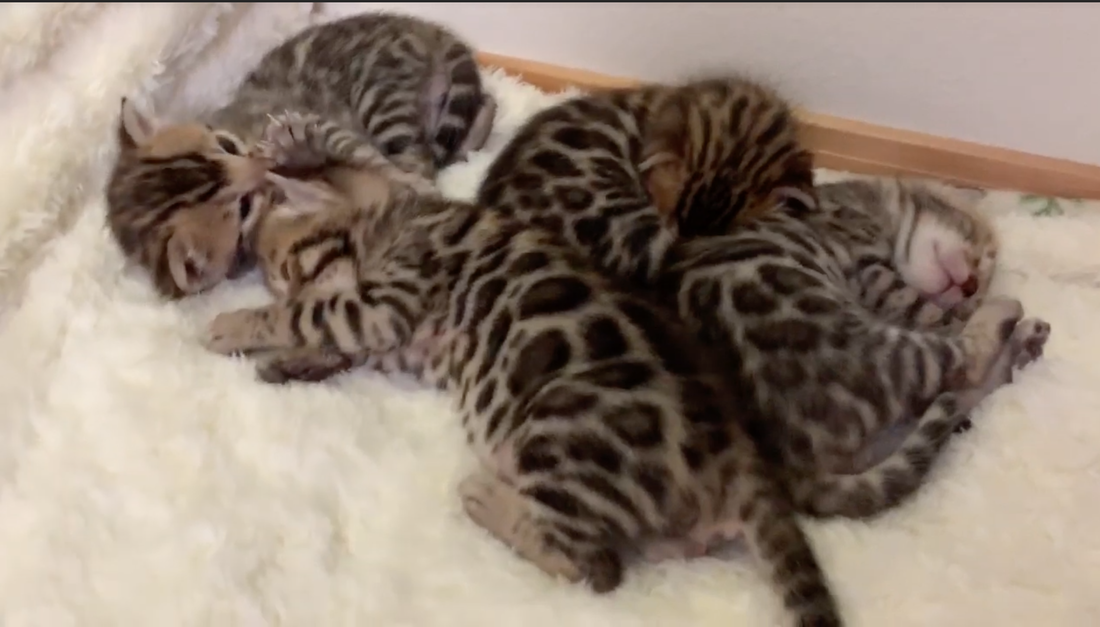
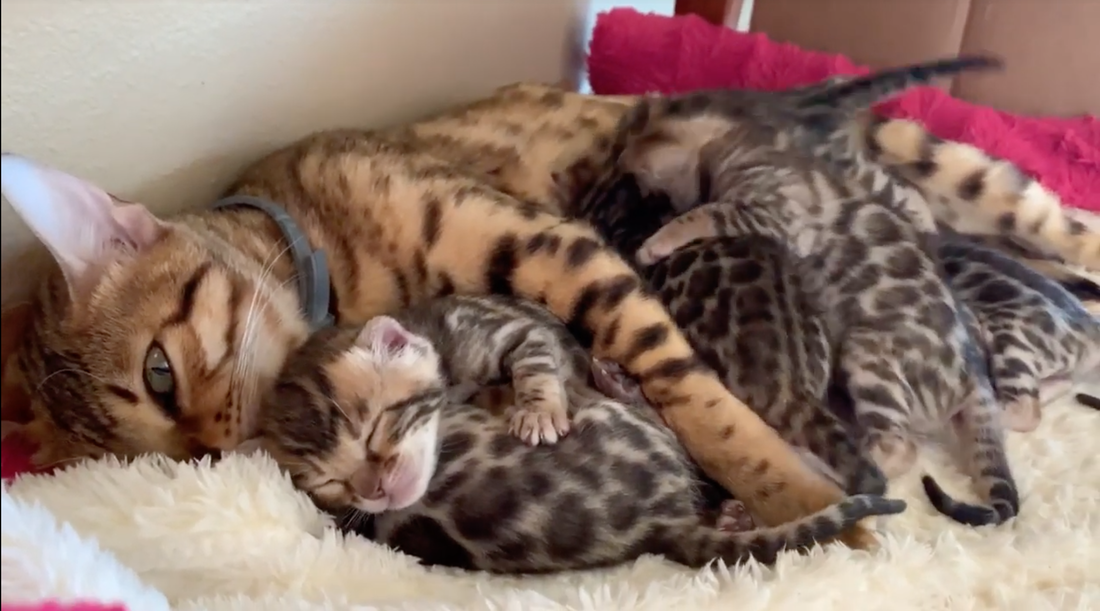
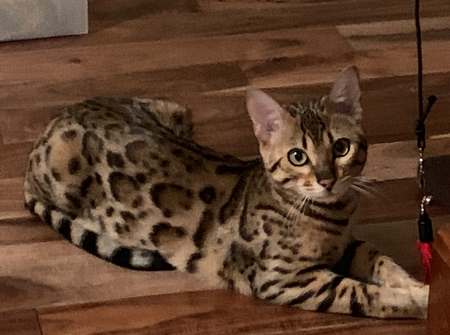




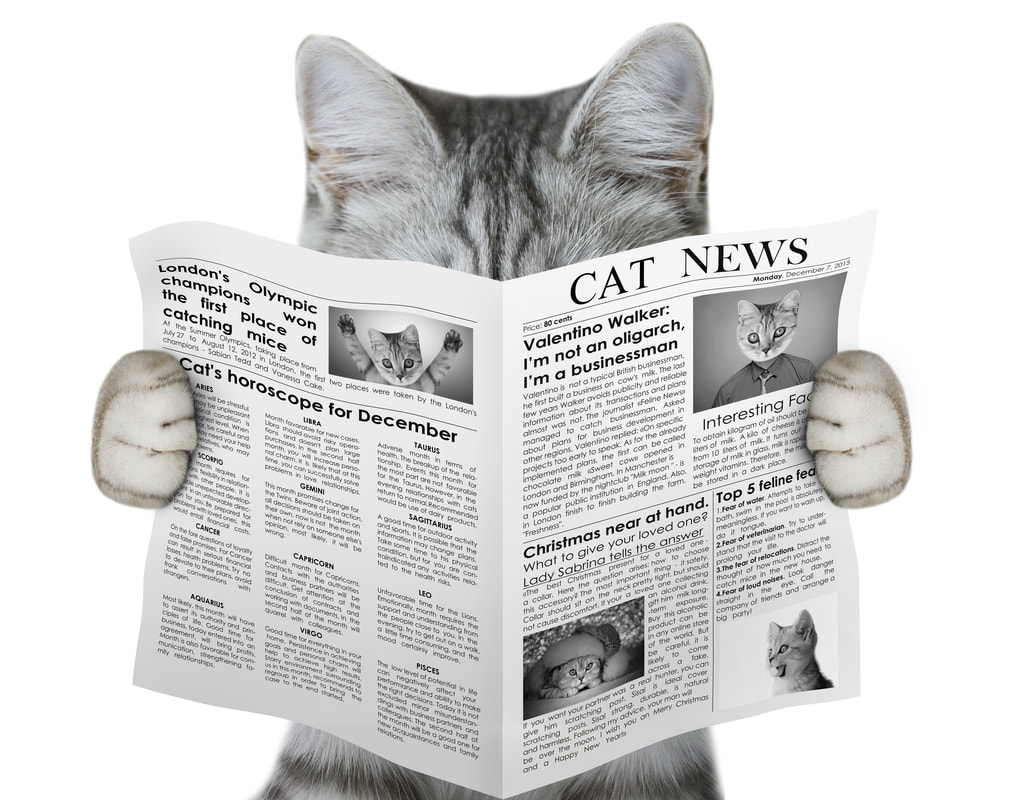








 RSS Feed
RSS Feed































